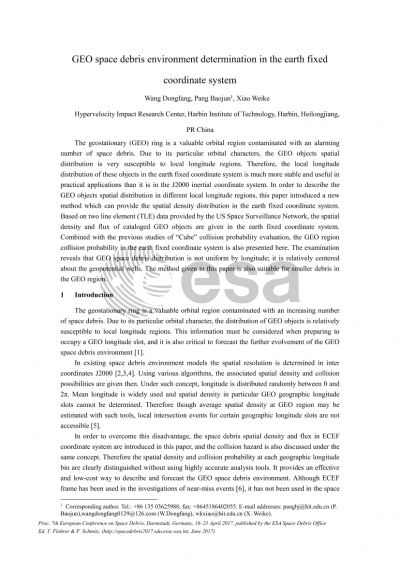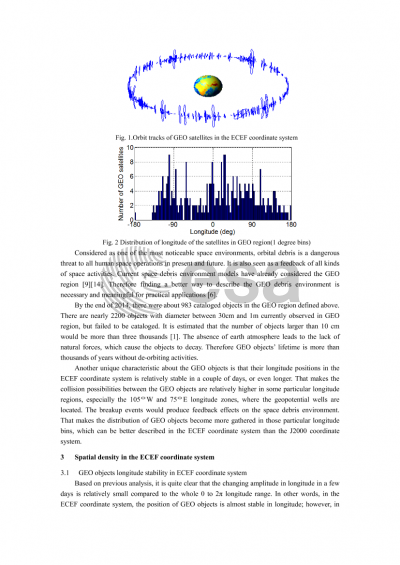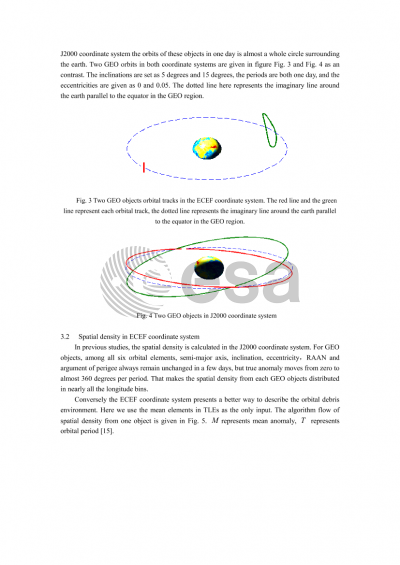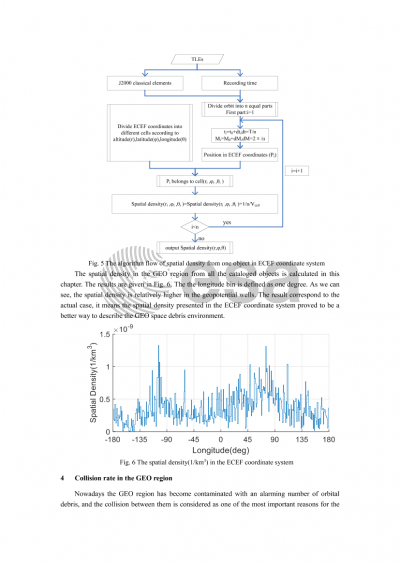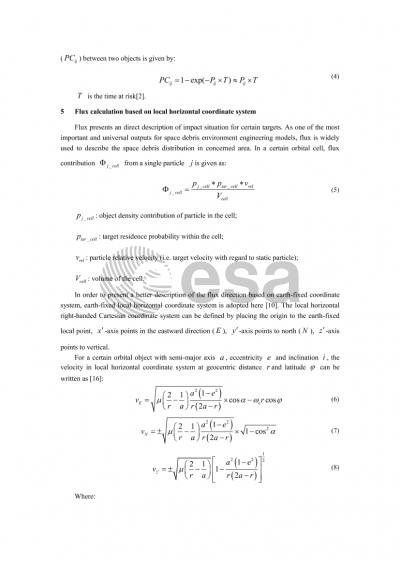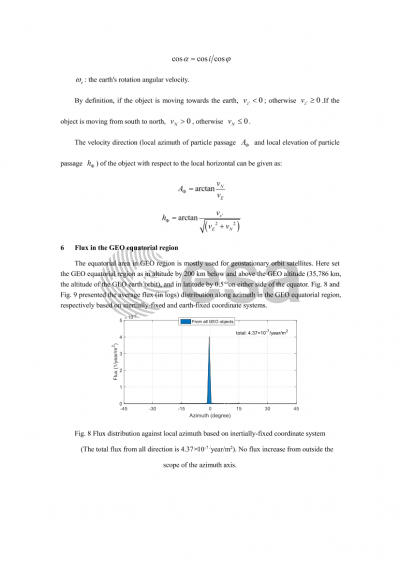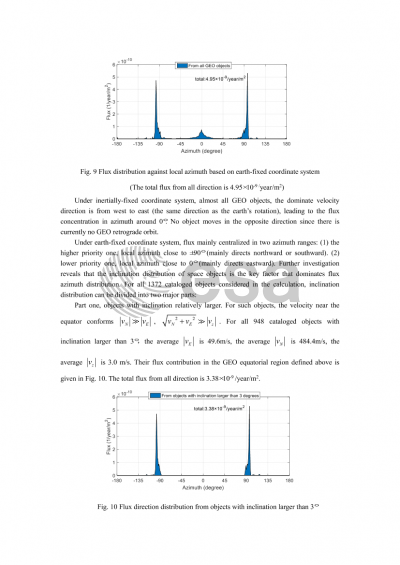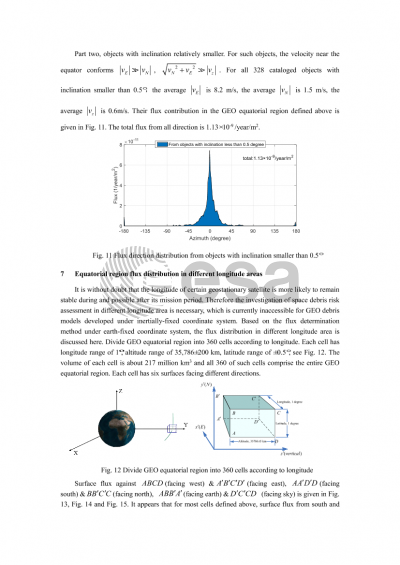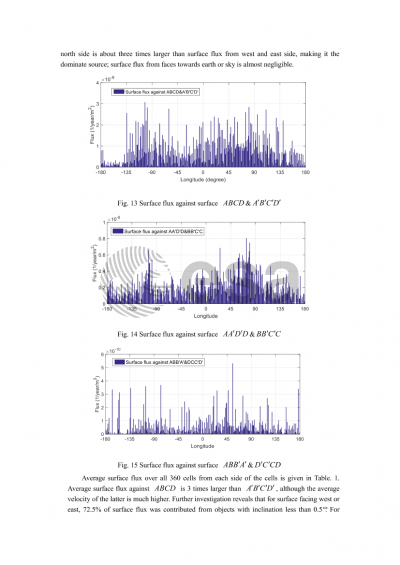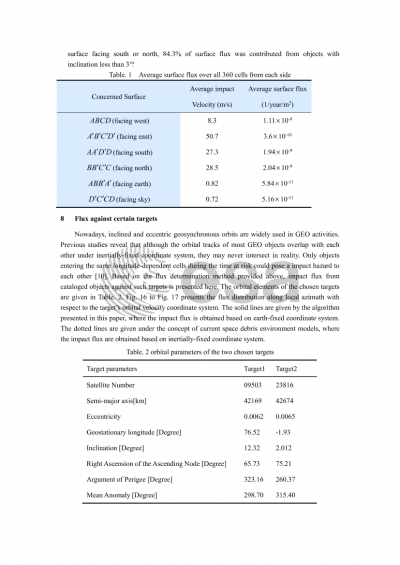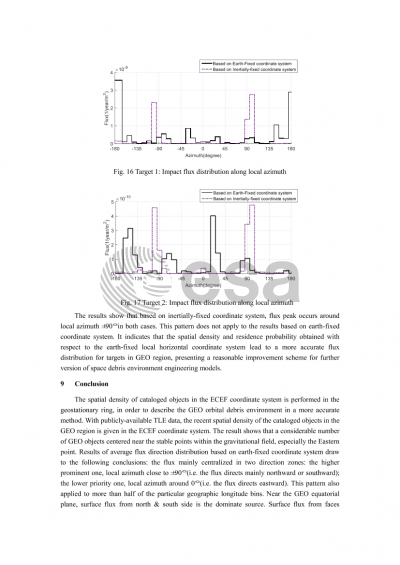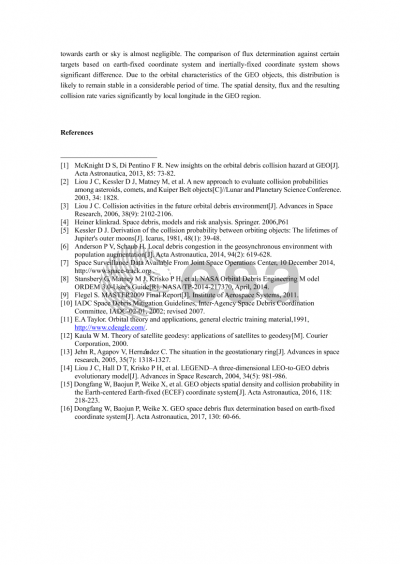Document details

Abstract
The geostationary (GEO) ring is a valuable orbital region contaminated with an alarming number of space debris. Due to its particular orbital characters, the GEO objects spatial distribution is very susceptible to local longitude regions. Therefore, the local longitude distribution of these objects in the earth fixed coordinate system is much more stable and useful in practical applications than it is in the J2000 inertial coordinate system. In order to describe the GEO objects spatial distribution in different local longitude regions, this paper introduced a new method which can provide the spatial density distribution in the earth fixed coordinate system. Based on two line element (TLE) data provided by the US Space Surveillance Network, the spatial density and flux of cataloged GEO objects are given in the earth fixed coordinate system. Combined with the previous studies of “Cube” collision probability evaluation, the GEO region collision probability in the earth fixed coordinate system is also presented here. The examination reveals that GEO space debris distribution is not uniform by longitude; it is relatively centered about the geopotential wells. The method given in this paper is also suitable for smaller debris in the GEO region.
Preview
